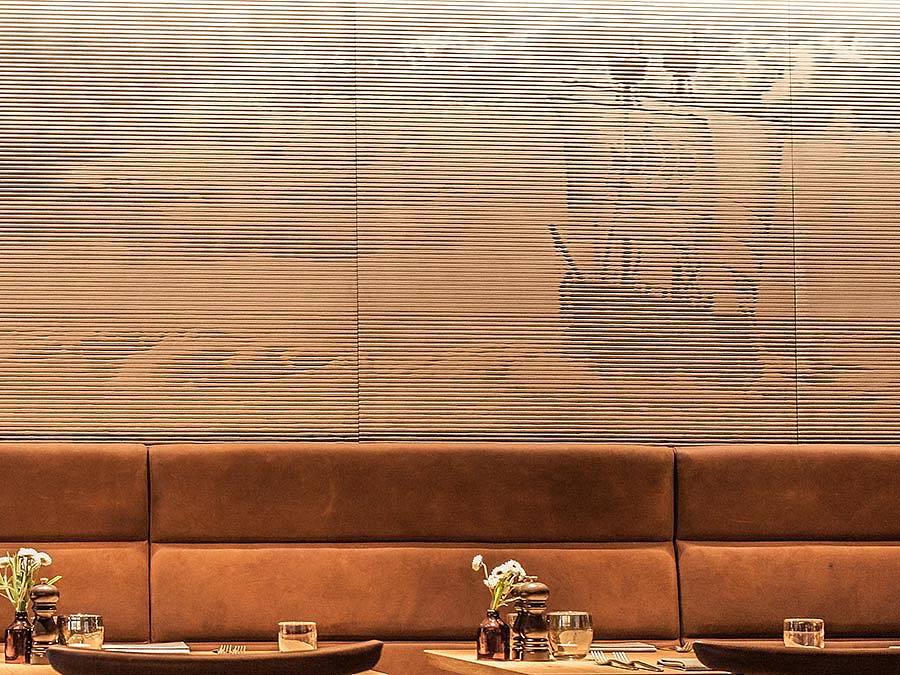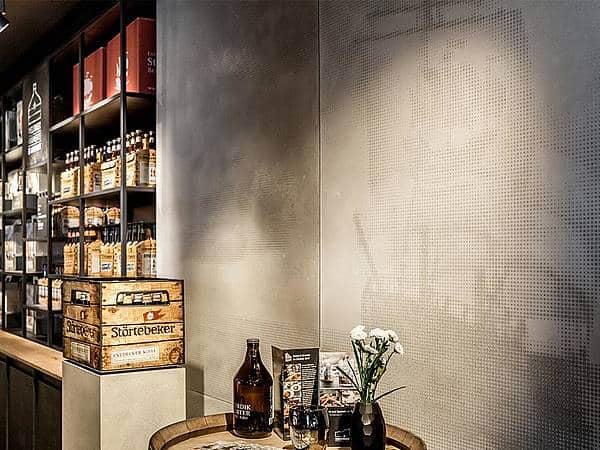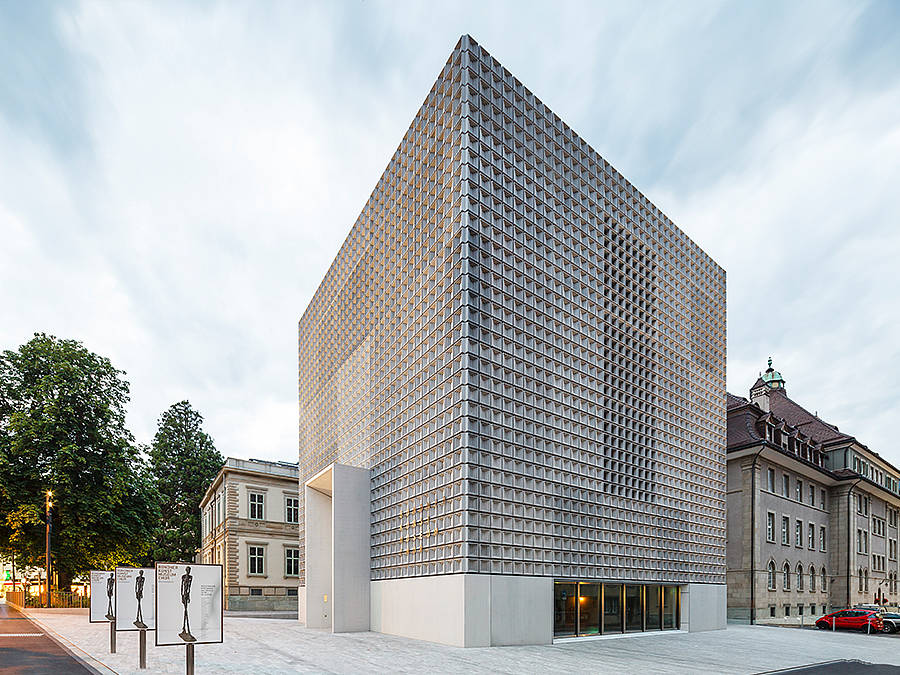
Stories
Setting sail with photo concrete
The interior walls of Hamburg-based restaurant Störtebeker received a maritime character thanks to the artico® process and photo-engraving formliners.

When the Elbphilharmonie opened on January 11, 2017, the Port of Hamburg finally had its new landmark. The building stands proud over the Elbe river and welcomes the city’s residents and visitors alike.
In addition to a spectacular concert hall and a hotel, the “Störtebeker Elbphilharmonie” restaurant has also established itself in the prestigious property. Internationally award-winning specialty brews, culinary side dishes along with creative, haute cuisine are served on three floors under the auspices of Störtebeker Braumanufaktur and Hamburg-based eastgroup. Visitors can purchase select beer specialties in the adjacent shop.
The restaurant combines Nordic flair with an upscale design. The design firm Formwaende handled the concept and execution. While doing so, the interior designers drew inspiration from Stockholm and Copenhagen’s Scandinavian style and combined it with that feeling of Nordic maritime living. Warm colors, massive materials such as exposed concrete, raw steel, massive oak wood and scenic lighting dominate the restaurant’s interior design. Colorful accents in Störtebeker red establish the brand in the scene. “The result: A warm, starkly contrasting and intimate atmosphere with select massive and expressive materials along with shape and color components that do not detract from the view of the Elbe river and the port panorama”, said the interior designers at Formwaende.
The main highlight are the visually designed and haptically tangible exposed concrete walls. These surfaces were produced with two RECKLI products: On the fifth floor, which is where the “Beer & Dine” is located, photo-engraving formliners were used to turn a complete wall surface into an ocean crossed by Störtebeker’s twomaster. A computer was used to convert the ship motif–a 15th century caravel–from an image to a file for the CNC mill. Using this file, the mill creates a positive model on panel material. Afterwards, the formliner is cast onto it, and it is later used to place the motif on the concrete. Its relief-like surface structure makes it seem as if the image were milled into the concrete. Depending on the light, the motif comes into its own at varying degrees: A vertical light incidence makes it disappear; a lateral light incidence casts the relief’s shadows, making the picture appear clearly on the concrete.

Photos: © Arne Vollstedt
On the sixth floor–which has the bistro, the shop and the tasting area–the team opted for an additional visually designed concrete surface. Unlike in the restaurant, Störtebeker’s twomaster was implemented here using the artico® process. To that end, images, personalized designs or graphics are placed on a plastic film that is printed with a concrete deactivator. The deactivator causes a time-delayed setting of the concrete. After removal of the form, the treated part of the surface can be washed out. Since the topmost cementitious material is partially removed, it creates a contrast between smooth and washed-out surfaces that truly make the motif stand out. The motif’s effect is on the washed-out surfaces, irrespective of light incidence, which is why artico® is particularly suited for use on indoor exposed concrete surfaces as well.
These photographically designed concrete walls lustrously combine with the Störtebeker Elbphilharmonie’s color and material concept. They characterize the restaurant area with an unforgettable Hamburg style that combines sailing, port romance and cuisine.

